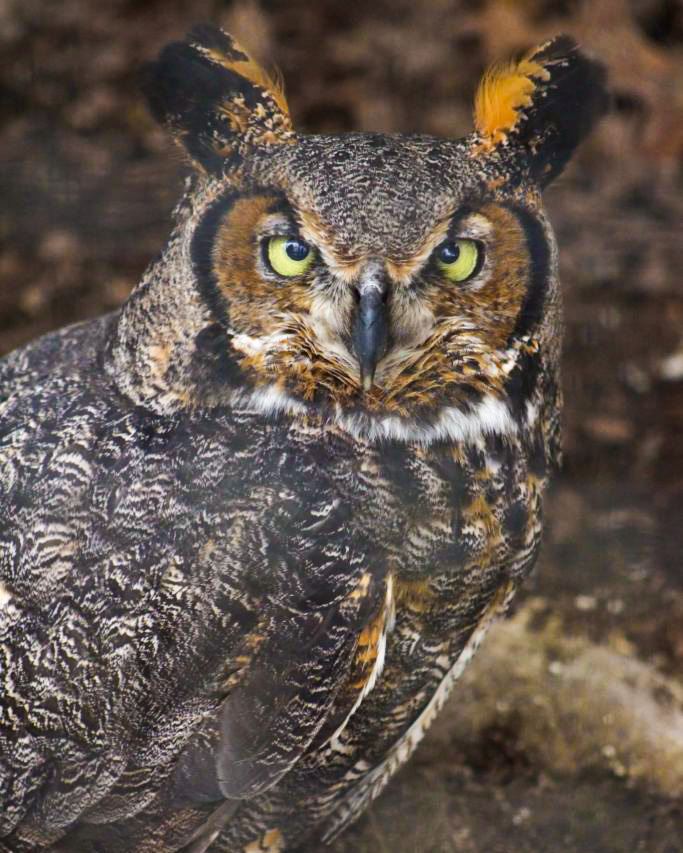- Pumpkin’s remarkable life and history, surpassing the average lifespan of a Great Horned Owl.
- The circumstances that led Pumpkin to live at Binder Park Zoo and her contributions to the zoo.
- The unique care and dedication provided by the animal care team at Binder Park Zoo.
- The impact of Pumpkin on the zoo’s staff, visitors, and the broader community.
- The role of zoos in wildlife conservation, education, and research.
Pumpkin, a Great Horned Owl, led an extraordinary life under the care of Binder Park Zoo, far exceeding the typical lifespan of her species. Hatching in the wild, Pumpkin experienced an injury that rendered her unable to return to her natural habitat, a circumstance not uncommon among many rescued raptors. Her arrival at the zoo in 1987 marked the beginning of a journey that would span nearly four decades, a remarkable achievement given that Great Horned Owls typically live around 13 years in the wild and potentially up to 29 years under human care.
The fact that Pumpkin lived to an approximate age of 39 is a testament to the high level of attention, medical care, and enrichment she received throughout her life. It is well known that captive owls, provided with proper nutrition, medical care, and enrichment opportunities, can often live longer than their wild counterparts. Pumpkin’s longevity highlights the critical role of the animal care team in providing an environment where such animals can thrive.
Pumpkin’s journey to Binder Park Zoo began with an unfortunate event—an injury that could have spelled the end of her life in the wild. However, the zoo’s intervention turned this misfortune into an educational opportunity. Great Horned Owls, like Pumpkin, are apex predators, known for their keen eyesight, superior hunting skills, and loud hoots. In her role at the zoo, Pumpkin became an ambassador for her species, helping visitors understand and appreciate the complexities of owl biology and ecology.
The animal care team at Binder Park Zoo played a significant role in Pumpkin’s life. Their dedication encompassed more than just meeting her basic needs; it extended to creating an enriched environment that stimulated her natural behaviors. Regular health check-ups, varied diets, mental and physical enrichment activities, and social interactions with both humans and other animals are crucial to ensuring the well-being of animals in human care. The team’s relentless efforts enabled Pumpkin to live a full and enriched life, serving as a role model for best practices in animal care and zoo management.
Pumpkin’s presence at Binder Park Zoo was more than just a display; she was a vital part of the zoo’s mission to educate the public about wildlife conservation. Her friendly demeanor made her a favorite among visitors, and her story served as a powerful narrative about the impacts of human-wildlife interactions and the possibilities for rescue and rehabilitation. Educational programs often featured Pumpkin, where she helped illustrate the importance of protecting natural habitats, the role of apex predators in the ecosystem, and the challenges faced by wildlife.
For many staff members, Pumpkin was more than an animal in their care; she was a symbol of resilience and the incredible outcomes that can arise from dedicated animal care. The bonds formed between animal care staff and the animals they care for are profound, fostering a deep sense of responsibility and compassion. The passing of Pumpkin is a significant loss to the entire zoo community, marking the end of an era of personal connections and educational impact.
The passing of Pumpkin also emphasizes the broader significance of zoos in wildlife conservation. Institutions like Binder Park Zoo are crucial in the preservation of species, providing safe havens for injured and endangered animals, facilitating breeding programs, and conducting vital research that informs conservation strategies. Zoos also serve as educational platforms, raising awareness and inspiring action among the public. They collaborate with global conservation efforts, contributing to the protection of biodiversity and ecosystems.
Pumpkin’s life and legacy underscore the important role humans play in the care and conservation of wildlife. Her story is a reminder of the delicate balance between human activities and the natural world, and the potential for positive intervention through rescue, rehabilitation, and education. As zoos continue to advance their practices and improve animal welfare standards, they will remain pivotal in fostering a deeper understanding and appreciation of wildlife.
In her nearly four decades at Binder Park Zoo, Pumpkin left an indelible mark on all who encountered her. Her life story educated many about Great Horned Owls, their natural behaviors, and the importance of conservation efforts. She demonstrated the profound impact that comprehensive care and a loving environment can have on an animal’s life. Rest in peace, Pumpkin. Your legacy will continue to inspire and educate future generations about the wonders of the animal kingdom and the importance of wildlife conservation.
*****
Source Description
It is with heavy hearts that we announce the passing of one of our beloved residents, Pumpkin, the Great Horned Owl.
Pumpkin hatched in the wild, and unfortunately suffered an injury that deemed her unreleaseable and arrived at BPZ in 1987. At an extraordinary 39 years old (approximate age), Pumpkin outlived the average lifespan of her species, which is 13 years in the wild and 29 years in human care. This incredible milestone is a testament to the constant care, love, and attention she received from our wonderful animal care team.
Pumpkin has been a special part of the Binder Park Zoo family for many years and has left an immeasurable impression on the heart of the zoo throughout her time here. Her friendly greetings will be missed dearly by both staff and visitors. Please keep our animal care team in your thoughts as they continue their invaluable work caring for our animals. Rest in peace, dear Pumpkin. You will forever be in our hearts. 🧡

